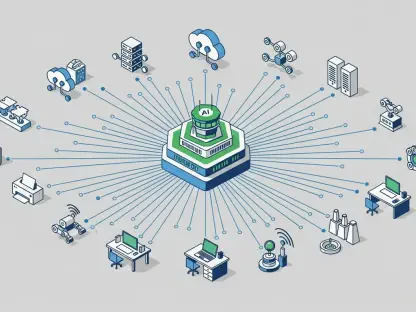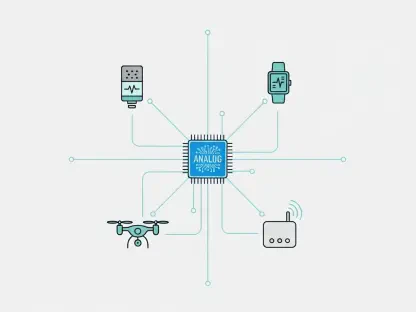Imagine stepping into a bustling airport, eager to board your flight, only to be met with a scanner capturing your face without a word of explanation or a chance to say no. This scenario is becoming increasingly common across U.S. airports as the Transportation Security Administration (TSA) rolls out facial recognition technology at over 250 locations nationwide. Originally introduced to bolster security and streamline identity verification, this biometric system has sparked a heated debate about the delicate balance between efficiency and personal privacy. While the technology promises faster processing and enhanced safety, many passengers and advocacy groups question whether it comes at the cost of fundamental rights. The lack of transparency and consent surrounding its use has fueled public distrust, prompting lawmakers to step in with potential reforms. This complex issue touches on broader concerns about data security and individual autonomy in an era of rapid technological advancement.
The Technology and Its Implementation
Unveiling the System’s Capabilities
Facial recognition technology deployed by the TSA represents a significant leap in airport security measures, designed to verify passenger identities with remarkable precision. A recent report from the Privacy and Civil Liberties Oversight Board highlights an error rate of less than 1%, positioning this system as far more reliable than other biometric alternatives. Operating at hundreds of airports, including high-traffic hubs like Fort Lauderdale and Las Vegas, the technology aims to reduce wait times by quickly matching faces to identification documents. Proponents argue that such efficiency is crucial in managing the millions of travelers passing through security checkpoints daily. Yet, beneath this technological prowess lies a growing unease among the public about how seamlessly it integrates into routine travel without clear communication. The system’s ability to function with minimal errors is impressive, but it also raises questions about whether accuracy should overshadow the need for passenger awareness and consent in its application.
Challenges in Public Awareness
Despite the advanced capabilities of facial recognition systems, a significant gap exists in informing passengers about their rights and the technology’s use. A study conducted by the Algorithmic Justice League revealed that a mere 1% of travelers were made aware of their ability to opt out of facial scanning. Many who attempted to decline reported hostile encounters with TSA agents, including delays or dismissive attitudes that sometimes resulted in missed flights. This lack of transparency is compounded by insufficient signage or verbal notifications at checkpoints, leaving most passengers unaware that their faces are being captured. Over 60% of surveyed individuals expressed concern that their biometric data could be shared with third parties, amplifying fears of misuse. The TSA maintains that images are not stored outside testing environments, yet public skepticism persists. This disconnect between the system’s intent and passenger experience underscores a critical flaw in implementation, where efficiency often trumps the ethical obligation to inform and protect.
Privacy Concerns and Legislative Pushback
Public Distrust and Data Security Fears
The unease surrounding facial recognition at airports extends far beyond mere inconvenience, delving into profound concerns about privacy and data security. A staggering 74% of passengers reported receiving no prior warning about the use of this technology before being scanned, fueling a sense of violation among travelers. Surveys indicate that more than half of those questioned worry about the potential for their images to be mishandled or shared without consent, a fear not entirely unfounded given historical data breaches in other sectors. The lack of clear communication from authorities only deepens this distrust, as many feel their personal information is being exploited under the guise of security. While the TSA insists on strict protocols to safeguard data, the absence of tangible reassurances leaves room for doubt. This pervasive anxiety highlights a broader societal tension between adopting cutting-edge technology and preserving individual rights, a balance that remains elusive in the current framework of airport security measures.
Lawmakers Step In with Protective Measures
In response to mounting public concern, legislative efforts have emerged to address the contentious use of facial recognition by the TSA. A bipartisan group of senators, led by Senator Jeff Merkley of Oregon, recently reintroduced the Traveler Privacy Protection Act, a bill aimed at ensuring that facial scanning remains optional for air travel. The proposed legislation mandates clear signage about opt-out rights and establishes safeguards to prevent data misuse, directly challenging the mandatory nature of current practices. Inspired by personal experiences of being denied the chance to avoid scanning, lawmakers argue that the TSA’s approach borders on overreach, potentially creating a vast database of biometric information. The act seeks to restore passenger autonomy by allowing alternative identification methods, such as driver’s licenses, to suffice. This push for reform reflects a growing consensus that while security is paramount, it should not come at the expense of transparency and choice, setting the stage for a pivotal shift in how biometric technology is regulated.
Balancing Security and Individual Rights
Industry Arguments for Continued Use
On the other side of the debate, representatives from the airline and security industries present compelling arguments for maintaining facial recognition systems at airports. Organizations like Airlines for America emphasize that abandoning this technology could lead to significant operational setbacks, including increased staffing costs and longer processing times. More critically, they warn that limiting biometric tools might heighten risks of fraud, smuggling, human trafficking, and even terrorism, as traditional identification methods are often less secure. The precision of facial recognition is seen as a vital asset in detecting discrepancies that manual checks might miss, thereby enhancing national safety. Industry stakeholders contend that the benefits of streamlined operations and robust security far outweigh the privacy concerns, provided that implementation is handled with care. This perspective underscores the challenge of finding a middle ground where technological advancements can coexist with ethical considerations without compromising critical safety measures.
Reflecting on Ethical Implications
As the debate over facial recognition technology unfolds, it becomes evident that the core issue is not the system’s functionality but rather the ethical framework surrounding its deployment. Critics and advocates alike acknowledge the precision and potential of biometrics to transform airport security, yet the persistent lack of consent and transparency remains a glaring oversight. Looking back, the experiences of passengers who faced dismissive treatment or missed flights due to opting out paint a troubling picture of disregard for individual choice. Similarly, the legislative efforts to mandate opt-out options and protect data reflect a societal demand for accountability. The tension between security imperatives and personal rights is a defining struggle, one that demands innovative solutions. Moving forward, the focus should shift to integrating clear communication and robust safeguards into biometric systems. Exploring hybrid models that prioritize both efficiency and autonomy could pave the way for trust. Ultimately, the resolution of this issue lies in fostering dialogue among stakeholders to ensure that technology serves humanity without overstepping boundaries.









